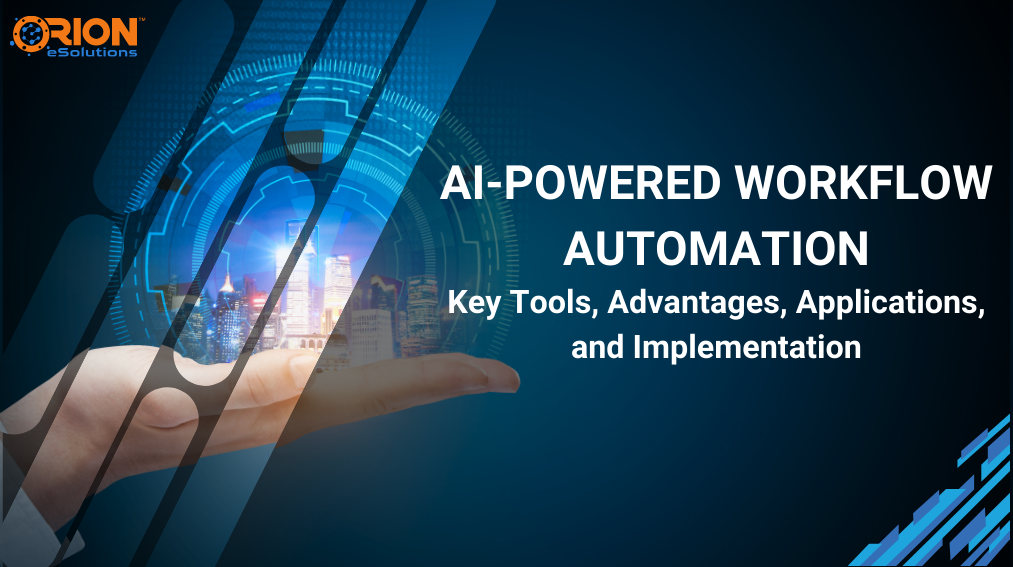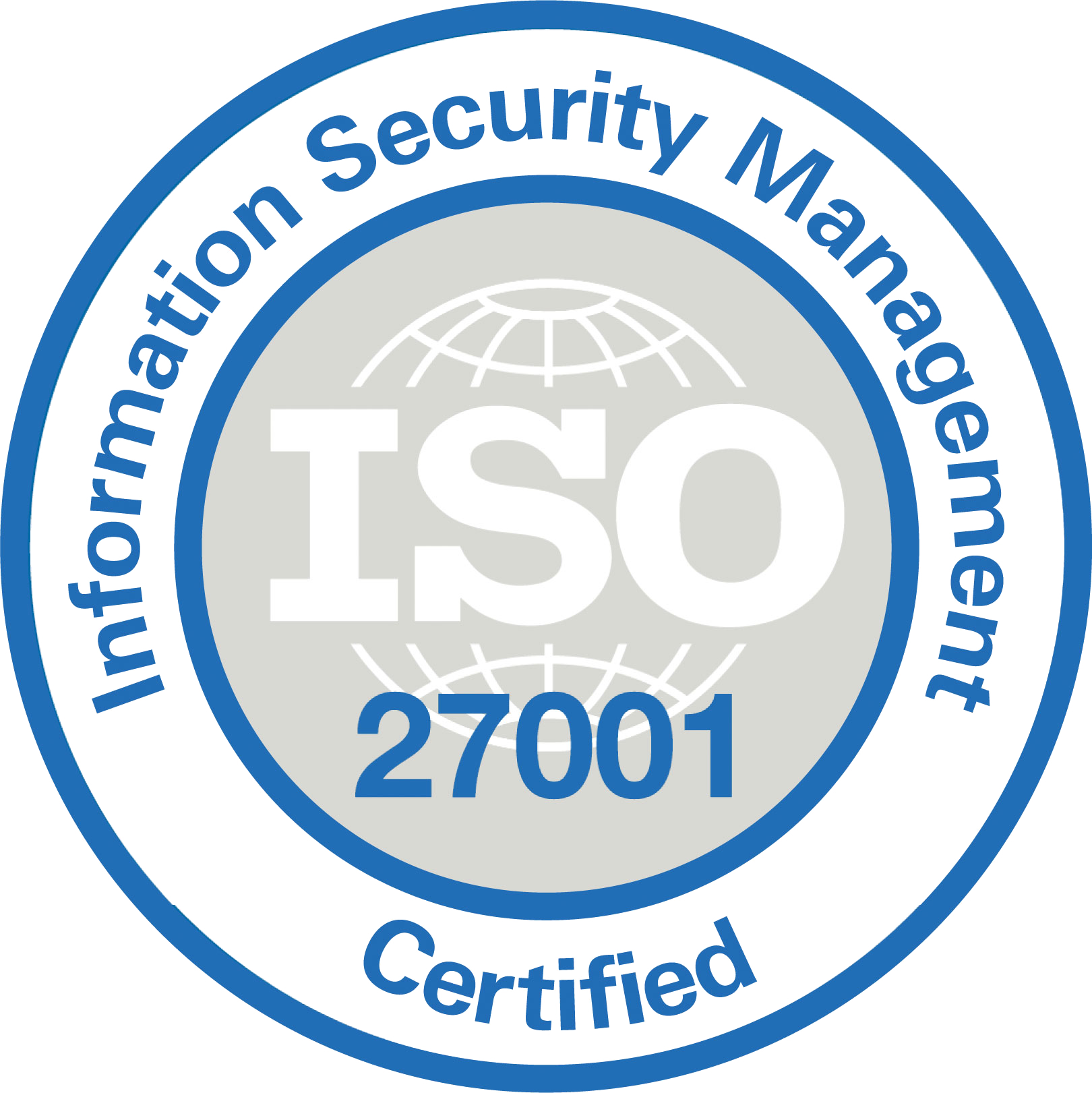The world is changing and we must keep up with the pace to stay ahead of the race. It is about time we let go of the strenuous drafting of lengthy emails, reachout texts, and follow-up pings. AI-Powered Workflow Automation does exactly that- takes care of the boring and monotonous tasks so that you can channel all your attention to innovation and more. However, the market is buzzing with several AI development company and automation tools and deciding which one to opt for can be a challenging task. Whether you’re a small enterprise offering AI development services in USA or beyond or a large enterprise, understanding and adopting AI-driven automation can provide a significant edge over your competitors. Let’s dive into the crucial factors and figures that you should consider before choosing an automation workflow.
What is AI-Powered Workflow Automation?
AI-powered workflow automation employs the technologies of RPA, machine learning (ML), and natural language processing (NLP) to automate arduous and monotonous tasks and enhance decision-making across business functions. AI-powered automation learns from data and adjusts over time, in contrast to traditional task automation that follows a preexisting set of rules. Through this, an AI development company can manage delicate and complex duties such as financial reconciliations, customer support, and document processing without the need for human intervention.
AI-driven workflows allow systems to comprehend, interpret, and react to data on their own, thus assisting in making decisions and initiating actions instantly without much hassle or human support. Workflows become more proactive as a result of the transition from “assistive” automation to “agentic” AI, handling tasks from inception to completion.
Notable Benefits of AI-Powered Workflow Automation
There is a list of perks that is accompanied by employing workflow automation. Below listed are some of the major ones-
- Higher Efficiency: For an AI development company, the automation tools help in speeding up business processes that can drastically reduce manual intervention, which can be further utilised effectively in other innovations.
- Error Reduction: Automation workflows also contribute to reducing human errors and inconsistencies to a extensive level. The minor errors and glitches that are naturally missed by the human eye can be fixed through AI.
- Cost Savings: The operational costs are also lower because of more efficient resource management.
- Compliance: It also helps in maintaining audit trails and ensuring better adherence to regulations.
Important Tools and Vendors
For an automation setup to exceed and succeed immensely, it is important to opt for the right tool for your system. Several AI-powered workflow automation platforms cater to different business needs. Below is a breakdown of popular tools and vendors:
1. Enterprise RPA + AI Platforms
- UiPath: This particular tool is widely recognised for its scalability and enterprise capabilities and can be beneficial for dispatching several AI development services in USA and beyond. UiPath produces results by mixing RPA with AI for complex automation solutions. Its tools help automate high-value processes across a range of industries, including finance, healthcare, and supply chain.
- Automation Anywhere: Automation Anywhere uniquely combines RPA with cognitive AI that caters to complex, knowledge-driven tasks and is widely used by Fortune 500 companies and other major AI development companies.
- Pega Systems: Pega serves as an overall and holistic automation platform withholding a strong AI integration, which is perfect for large enterprises or an AI development company with complex and intricate workflows.
2. Integration-Platforms / iPaaS & Low-Code
- Workato: A popular iPaaS tool, Workato integrates various cloud apps, automates workflows, and enables business users to create their own automations with little technical knowledge.
- Microsoft Power Automate: Microsoft Power is an automation tool that can be easily used, and it connects various Microsoft products and third-party apps. This primarily works wonderfully for small to mid-sized businesses.
- MuleSoft: MuleSoft is heavily acclaimed for its delicate and sophisticated integrations, which help businesses connect apps, data, and devices to streamline workflows.
3. Citizen Automation Tools
- Zapier: A highly accessible tool for automating simple workflows across hundreds of apps, Zapier is popular among small businesses.
- Make (Integromat): Another low-code automation tool that offers robust functionality and integrates with thousands of apps.
4. Specialized Document Automation
- ABBYY: Using advanced OCR technology, ABBYY automates document processing and data extraction for industries like finance and insurance.
5. Emerging Agentic AI Orchestration Platforms
The automation landscape is being further enhanced by the emergence of new players with solutions that proactively manage workflows based on predetermined goals. These tools focus on accomplishing goals rather than just following directions, and they promise to orchestrate workflows with little human intervention.
Core Advantages and Critical Facts
For an AI development company, switching to workflow automation can come with a bona fide benefit that can significantly transform and evolve how businesses operate, delivering the dual perks of operational and strategic benefits. Below listed are some of the key advantages and statistics to help you better understand:
- Faster Throughout: AI workflows vastly reduce the cycle time for repetitive and monotonous tasks, such as invoice processing or order fulfillment. As the studies claim, employing automation workflows can cut down the load of task processing as low as 90%.
- Cost Reduction: According to McKinsey, businesses that implement RPA and AI-powered automation can save up to 30% on labor costs by eliminating manual tasks. This way, the human resources can be put to better use, leading to further innovation and growth.
- Improved Accuracy: AI systems reduce human errors in data entry, decision-making, and process execution. For instance, companies using AI-powered invoice processing platforms report up to 70% fewer errors in financial transactions. It is not unusual for humans to make minor errors and mistakes that can be easily rectified through automation tools.
- Enhanced Compliance: Automated workflows maintain audit trails, making it easier to track and report regulatory compliance. This is especially valuable for industries like finance, healthcare, and legal.
Step-by-Step Implementation Guide
The trick to best utilise any technology lies in its execution, which is best done systematically. To successfully implement AI-powered workflow automation, businesses must follow a systematic approach. Below is a laid-out plan for how you can go about it-
1. Identify High-Impact, Low-Risk Processes
First things first, begin with things that tend to be repetitive, rules-based, and hold relatively low risk. Automate these first to show quick wins.
2. Assess Data Quality
Secondly, make sure data is clean, structured, and accessible as poor data quality can negatively affect the automation efforts. It is recommended to use tools like Trifacta for data cleaning before automating workflows.
3. Pilot with a Cross-Functional Team
Next thing on the plate is to collaborate with IT, business owners, and data scientists that can help you better design the automation process. For an AI development Company, it is advisable to use low-code tools for initial pilots.
4. Select Tools Based on Fit
While choosing a certain tool, make sure the tool matches the unique needs of your organisation. For instance, small businesses might start with Zapier, while enterprises can use UiPath or Automation Anywhere.
5. Design Human-in-the-Loop Processes
Despite the revolutionary effect of AI, there is no substitute to the skills, thus human oversight is essential for decision thresholds and exceptions. The goal should be to design your workflows to include critical checks at various stages.
6. Measure and Iterate
Lastly, track KPIs like cycle time, cost savings, and error rates to gauge success. In this stage, one is suggested to use data-driven insights to refine the process.
Frequently Asked Questions (FAQs)
What are the benefits of using AI-powered workflow automation for businesses in the USA?
Workflow automation driven by AI possesses the power to completely transform corporate operations by lowering manual labor, increasing efficiency, and guaranteeing better decision-making. AI development services in USA can automate intricate procedures like supply chain management, finance, and customer service by utilizing AI development services.
How long does it take to implement AI-powered workflow automation in a business?
The process’s complexity, the quality of the data, and the company’s size all affect how AI-powered workflow automation is implemented. AI development companies usually take a phased approach, beginning with smaller pilot projects and growing gradually.
What are the top challenges businesses face when adopting AI-powered workflow automation?
Despite the clear advantages, businesses often face challenges when adopting AI-powered workflow automation. Some common obstacles include data quality issues, integration difficulties with legacy systems, and resistance to change from employees.









